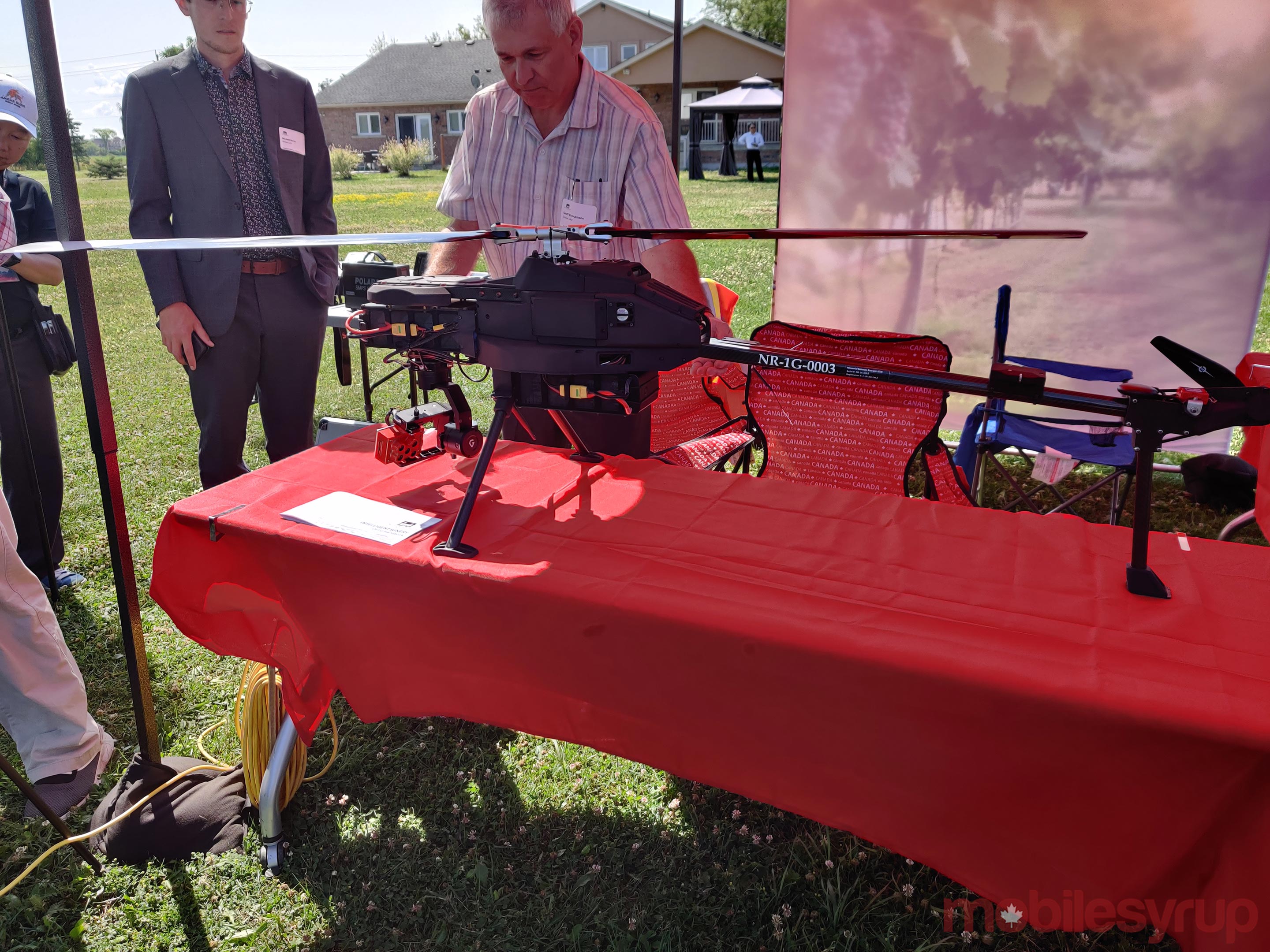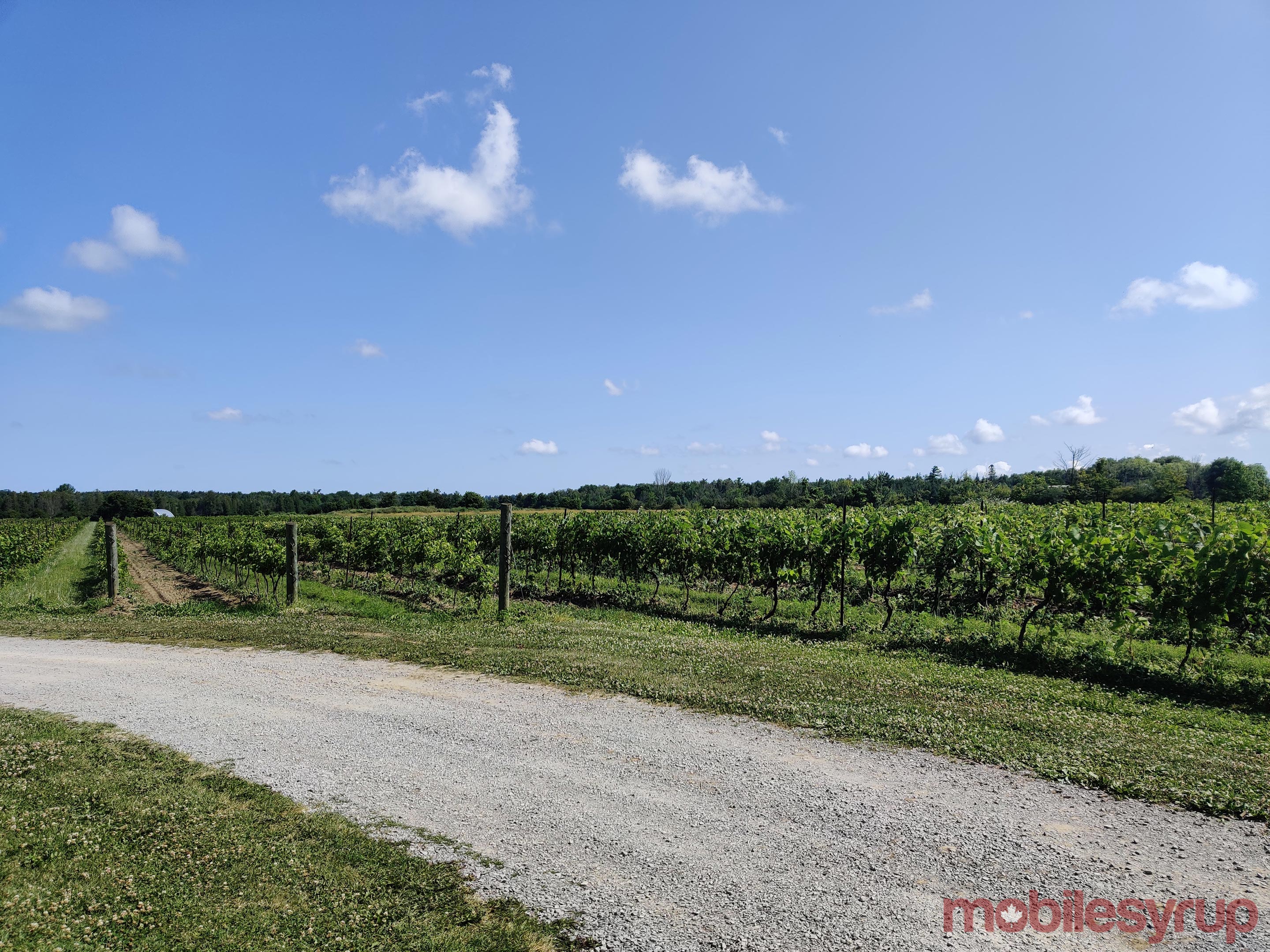'5G is not everything,' Huawei Canada says as it expands other businesses
Just north of Richmond Hill, Ontario is the location of a nondescript winery Huawei Canada has partnered with to continue growing in Canada despite a looming ban decision.
The Willow Springs Winery partnership also includes Global UAV Technologies, Telitek, Hub6 and Arht Media. The agreement allows the winery to begin using smart technology to manage the vineyard, production of wine and tours.
On July 24th, the partners and the winery signed a memorandum of understanding to collaborate and help explore new "smart agronomics" wireless technology applications.

For example, Global UAV would provide drones that would wing over and inspect the unabridged vineyard inside 15 minutes and signal problem areas that should exist examined. The drone can capture images, which show constitute health, how crops are doing and the vitality of the vineyard.
This type of technology, in theory, eliminates the nearly ii hours that a farmer would accept to walk through the entire vineyard.
The drones would as well contain Huawei Canada's bogus intelligence fries.
Telitek would provide high-precision sensors placed in the vineyard to measure temperature, humidity, wind, speed and air pressure. This gives the viticulturist real-fourth dimension data then they tin tailor the grape growing process.
Huawei Canada looks into growing enterprise business
During an interview at the winery, Chris Pereira, Huawei Canada'southward director of public affairs, explained to MobileSyrup that the Shenzhen, Cathay-based company isn't only thinking almost the future of 5G, just is also ensuring it maintains a focus on engineering science that could exist used when the next network iteration comes to Canada.
This also means focusing on connecting rural Canadians and working on enterprise technology.
"Enterprise is a relatively small portion. It's about fifteen percent global revenue. Our strategic goal is to balance carrier, enterprise and consumer — then 33 percent each. [Enterprise] is a growth marketplace," Pereira said.
He explained that the partnership with Willow Springs is a "first time proof of concept" to prove "what is possible in smart agriculture."
Pereira added that the drones were currently performance on 4G LTE networks, which given the area are probable supplied by either Bong or Telus.
He said that Huawei Canada intends to partner with drone companies to provide the chipset and that farmers could hire drone companies to aid manage their fields.

One time the drones connect to 5G networks, Pereira explained that the speed and accurateness regarding receiving images could exist improved.
At meridian speeds in ideal conditions, 5G networks are expected to achieve up to 20Gbps download speeds. This is roughly 20 times what'southward possible with LTE-Advanced today.
The reality of this though, and something to remember, is that these speeds would be available where there is Millimeter-moving ridge, or mmWave, an extremely high-frequency ring that offers high data speeds just a has a short-range. And while it might audio ideal to have these speeds at a farm, most carriers would probably utilize mmWave in locations where there is population density like in heavily populated cities or fifty-fifty at large stadiums.
The loftier speeds will too lower the time it takes to brainstorm accessing content from the network (otherwise known every bit latency) to almost a millisecond.
"A drone is flying fast across a field and if y'all have high latency, then 4G right now, it'south flying along it may see copse ahead of information technology…or even birds…and it might crash into information technology," Pereira said.
These fries, Pereira said, would piece of work on whatever network, whether or non Huawei is banned.
5G isn't everything for Huawei Canada, taking a different road
While Huawei continues its work in the country, the federal government is doing a review of 5G technologies in Canada and whether or not the Prc-based company should participate in providing equipment.
A decision could perhaps come up after the upcoming federal election.
5G networks are also not fully available in Canada yet and are expected to roll out in 2021.
Carriers have suggested that a delay in deciding on Huawei's future could push back the rollout of 5G in Canada. In particular, Bell and Telus are partnered with Huawei to provide terminal-mile infrastructure.
A potential ban could price the companies an estimated $1 billion CAD.
Despite an impending conclusion regarding 5G, it may seem that Huawei Canada is taking a different road and is, at the moment, focusing more of its time on edifice other areas of its business organisation.
"First of all, 5G is non everything, but I would say that 5G is of import to Huawei," Pereira said. "5G is 1 of our goals, simply we want to be number one in smartphones and enterprise every bit well. Huawei sets big goals."
Pereira insisted that even if Huawei Canada was banned from providing 5G network equipment, it wouldn't affect the company's acquirement.
"Right at present, our revenue from 5G in Canada is zilch…if nosotros don't practise 5G information technology'due south nil impact considering we have zero revenue," he said.
Pereira also noted that the company isn't asking for "special treatment."

"To address [potentially] being banned, we aren't asking for special treatment, nosotros are request to be treated as, then [with the] question of cybersecurity and 5G, there should exist set standards," he said.
And if the visitor was banned, Pereira reiterated what the visitor'south chairman Liang Hua has said, which is that "in the worst-instance scenario that happens, then nosotros would be dedicated to Canada [with other solutions]."
"Our acquirement is not merely 5G, we have enterprise solutions, the consumer business grouping, and none of that is under question in Canada," he said.
It'southward worth noting that in 2012, former Conservative prime minister Stephen Harper announced that Huawei would be able to remain in Canada just could merely provide the infrastructure that isn't in the core of the carriers' networks. The core is where the virtually vulnerable data resides.
Huawei Canada says it's non overshadowing the government
Pereira said that the company's roots began in rural and remote areas, and that'south where the focus is right now.
"When we started in Prc we didn't get-go in large cities. We were in areas where there might not even be running water," he said. "When nosotros go to the far north, this is not a new initiative for Huawei, it's going back to our traditional competitive strengths."
Huawei Canada announced multiple partnerships with Water ice Wireless, the get-go carrier to provide 4G LTE services to the town of Inuvik in the Northwest Territories, and the 2nd to connect more than seventy rural and remote Canadian communities by 2025.
The latter goal includes xx communities in the Arctic, 50 in northeastern Quebec and more in unconnected parts of Newfoundland and Labrador.
The announcements came later Rural Economical Evolution Government minister Bernadette Jordan revealed the 'Connectivity Strategy,' which includes connecting 100 percent of Canadians to loftier-speed internet by 2030.
When asked if Huawei Canada was trying to overshadow the government's efforts, Pereira disagreed.
"I wouldn't agree with that. [Huawei Canada, in 2017,] unveiled our latest vision and mission for Huawei, which is to bring digital to every person and organization," he said.
Source: https://mobilesyrup.com/2019/07/30/huawei-agriculture-smart-technology-willow-springs/
Posted by: dominguezwhiliver.blogspot.com


0 Response to "'5G is not everything,' Huawei Canada says as it expands other businesses"
Post a Comment